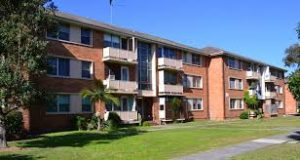Who Is Eligible for Subsidized Housing?
Subsidized housing schemes are for those people who cannot afford to live in affluent or even middle income places. Generally any city would have zones with higher and lower end property prices, where the rate of rent too varies accordingly.

Subsidized housing schemes are where even lower end property prices may be rented or sold off at an even lower end, and the local government body (which is the Housing Authority) is the one which gives the subsidy – either in the form of lower than asking rent or lower than asking selling price. The difference is paid for by the Housing Authority.
Eligibility Criteria
Of course not everyone can qualify for subsidized housing, as that would lead to everyone signing on for the said scheme – even those who may well afford to do without the subsidy.
Out of the many applications, only those who are deemed eligible qualify for it. Following are the eligibility criteria on which one qualifies for the subsidy.
Low – Income families and individuals:
As the subsidy is for those who cannot afford to make ends meet, are the ones who can qualify for the subsidy. The eligibility is based on:
- Annual Gross Income: this is the total income a household earns over a year. If it is under a certain amount, a person/family becomes eligible to claim a housing subsidy
- Elderly people or those who are disabled are also given a lot of consideration, as making a certain amount of income is more difficult for them as compared to younger and able bodied persons. A family too is given more weight over that of a single person.
- A U.S. citizenship or a proven immigration status. This is to ensure that families living within the U.S. get a subsidy as opposed to foreigners or travelers.
Once any one of the eligibility criteria is met, the Housing Authority (HA) does a background check on whether the family would be a worthy tenant or not. Any practices or actions found opposing those the HA find important, will automatically leave the family/person out of the running for a subsidy. This is because any disadvantageous effects to other tenants or the scheme need to be avoided at all costs.
Income limits are usually set about 80% of the median income of a county, for lower income while 50% of the same of very low income. However, these are not set bars and may vary across counties and between different HAs.
Subsidized housing meets several needs of the low and very low income households. Eligibility is thoroughly checked before the subsidy is handed out to those who deserve it.